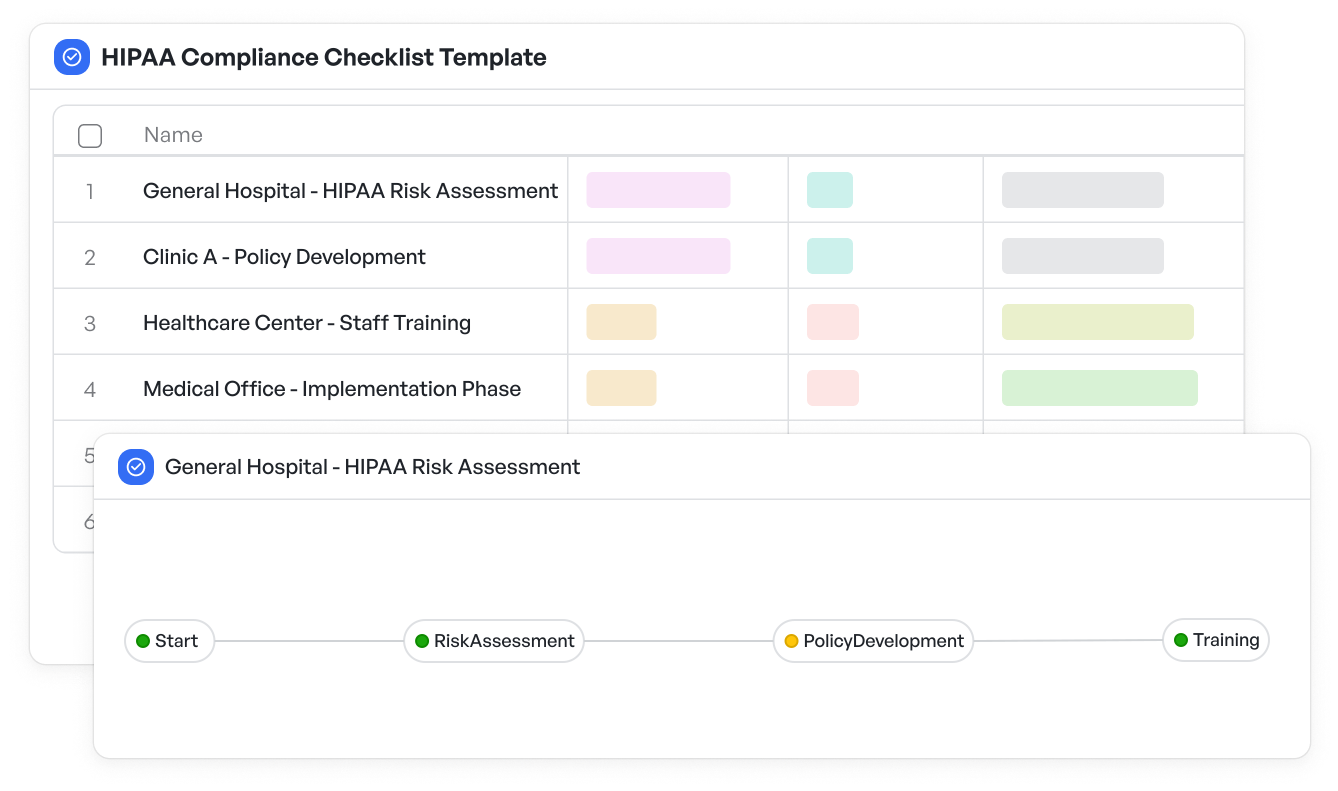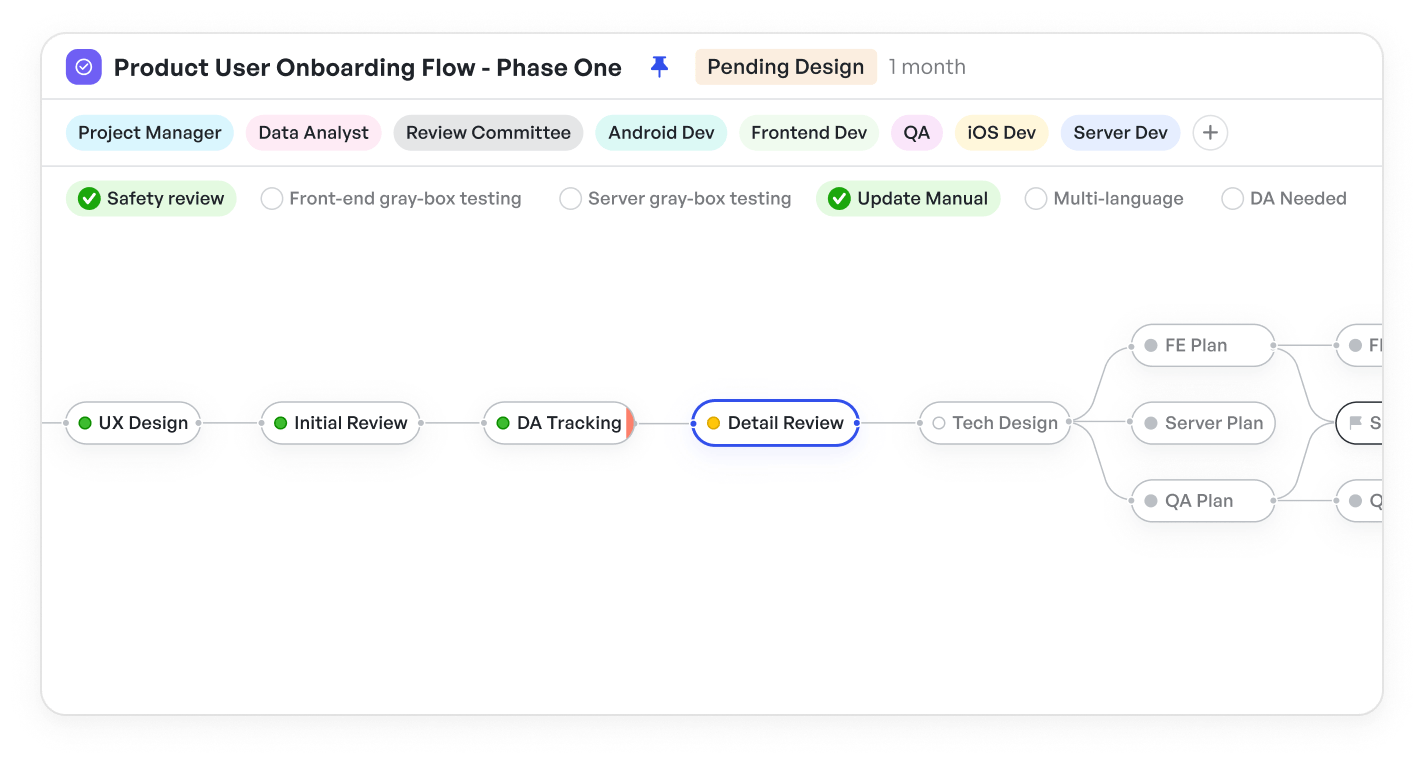How to Implement Feature-Driven Development In Healthcare

In the healthcare industry, delivering reliable, compliant, and user-friendly software is essential to improving patient outcomes and operational efficiency.
Feature-driven development (FDD) offers a structured Agile methodology tailored for complex software projects, making it a fitting approach for healthcare organizations that must balance speed, accuracy, and regulatory demands.
This article explores how feature-driven development applies to healthcare software projects, highlighting key benefits, challenges, and implementation tips. It also explains how visual workflow tools can support FDD teams in this sector.
What Is Feature-Driven Development in Healthcare?
Feature-driven development is an Agile process focused on delivering tangible, client-valued features in short, manageable iterations.
Unlike traditional Agile methods that might emphasize broad epics or user stories, FDD breaks down development into discrete, clearly defined features — small pieces of functionality that can be designed, built, and tested independently.
In healthcare software projects, these features might include modules like patient appointment scheduling, electronic health record (EHR) management, lab result integrations, or billing features.
By focusing on features, healthcare development teams can maintain clear priorities and deliver high-value components more predictably.
 Medical billing workflow template for managing billing features in healthcare software projects in Meegle
Medical billing workflow template for managing billing features in healthcare software projects in MeegleWhy Feature-Driven Development Works Well for Healthcare Software
Healthcare software projects often face unique complexities:
- Strict compliance and regulatory requirements (HIPAA, GDPR)
- Integration with legacy systems and medical devices
- High standards for data accuracy and security
- Diverse user roles, from clinicians to administrative staff
 HIPAA compliance checklist template to streamline regulatory adherence in healthcare software development
HIPAA compliance checklist template to streamline regulatory adherence in healthcare software developmentFDD's structured nature supports these needs by emphasizing upfront domain modeling, detailed feature lists, and design inspections before coding begins. This approach reduces rework and clarifies requirements, which helps avoid costly errors in sensitive healthcare environments.
Moreover, iterative feature delivery allows healthcare providers to receive incremental value faster, improving software adoption and enabling quicker feedback loops.
How to Implement Feature-Driven Development in Healthcare Projects
Implementing FDD requires a clear understanding of project goals and disciplined execution.
Here are the six key steps that the healthcare teams should follow to adopt feature-driven development effectively:
1. Develop an Overall Domain Model
Begin with a collaborative modeling session involving stakeholders such as clinicians, IT staff, and compliance officers.
This model outlines the key concepts and workflows relevant to the healthcare domain, such as patient records, appointment systems, and prescription management, while visualizing processes and scheduling milestones using the Healthcare Project Scheduling Template.
 Visualize healthcare workflows and schedule key milestones
Visualize healthcare workflows and schedule key milestones2. Build a Detailed Feature List
From the domain model, break down the software into small, client-valued features. Each feature should be deliverable within two weeks or less and focus on a specific functionality that meets a healthcare process need.
3. Plan by Feature Sets and Priorities
Group related features into sets for better management, and prioritize them based on regulatory deadlines, business impact, or user demand.
4. Design and Inspect Features
Before development starts, design the solution for each feature in detail, involving cross-functional reviews to catch issues early, especially concerning compliance and regulations.
5. Develop Features in Short Iterations
Organize feature teams to develop, test, and integrate features in short, focused cycles. Continuous integration within an Agile framework helps catch defects early and maintain high software quality, which is vital for healthcare applications.
Using an Agile Development Template, a structured framework that guides sprint planning, task management, and collaboration, can make iterative delivery more transparent and more efficient.
 Enhance healthcare software delivery with Agile frameworks and continuous integration
Enhance healthcare software delivery with Agile frameworks and continuous integration6. Regular Progress Reporting
Use visual workflow tools to maintain transparency. Teams and stakeholders can clearly track feature status, responsibilities, and timelines, improving collaboration across departments.
Supporting Feature-Driven Development with Visual Workflow Tools in Healthcare
Healthcare teams benefit from clear visualization of complex workflows and dependencies. Visual workflow tools enable teams to map features, assign ownership, and monitor progress in real-time.
Such tools offer several advantages in an FDD context:
- Improved visibility: Everyone understands how features connect to business processes and compliance checkpoints.
- Better collaboration: Cross-functional teams, from product managers to regulatory specialists, can easily coordinate and communicate.
- Simplified tracking: Visual dashboards help identify bottlenecks or delays, allowing proactive management of risks related to healthcare project delivery.
- Flexibility: Visual workflows adapt to changes in regulations or priorities without losing structure, which is vital in healthcare environments.
Using visual workflow features that provide customizable nodes, real-time dashboards, and flexible scheduling can greatly enhance project tracking and team collaboration.
 Explore node-driven workflows and real-time project tracking features
Explore node-driven workflows and real-time project tracking featuresCommon Challenges of Feature-Driven Development in Healthcare and How to Address Them
While FDD is well-suited to healthcare, teams may encounter challenges such as:
- Complex regulatory requirements: Managing compliance needs careful documentation and frequent reviews.
- Integration with legacy systems: Feature design must accommodate older technologies without disrupting critical workflows.
- User diversity: Designing features that meet the needs of varied user roles requires thorough stakeholder engagement.
Addressing these requires continuous engagement with clinical and operational stakeholders, leveraging compliance experts during design, and using flexible software tools that allow seamless collaboration and adaptation.
The Value of Feature-Driven Development for Healthcare Software Teams
Feature-driven development offers healthcare organizations a disciplined yet flexible approach to delivering software that meets strict quality, compliance, and usability standards.
By breaking projects into manageable features, teams can focus on delivering measurable value quickly, adapt to changing regulatory environments, and maintain clear communication across diverse stakeholders.
When combined with visual workflow tools, healthcare teams gain enhanced transparency and control over their software projects. This improves decision-making and supports faster, more accurate delivery, which is crucial in a sector where technology directly impacts patient care.
See how Meegle helps healthcare dev teams collaborate clearly and ship features faster..
The world’s #1 visualized project management tool
Powered by the next gen visual workflow engineRead More
Check All BlogsStart creating impactful work today



